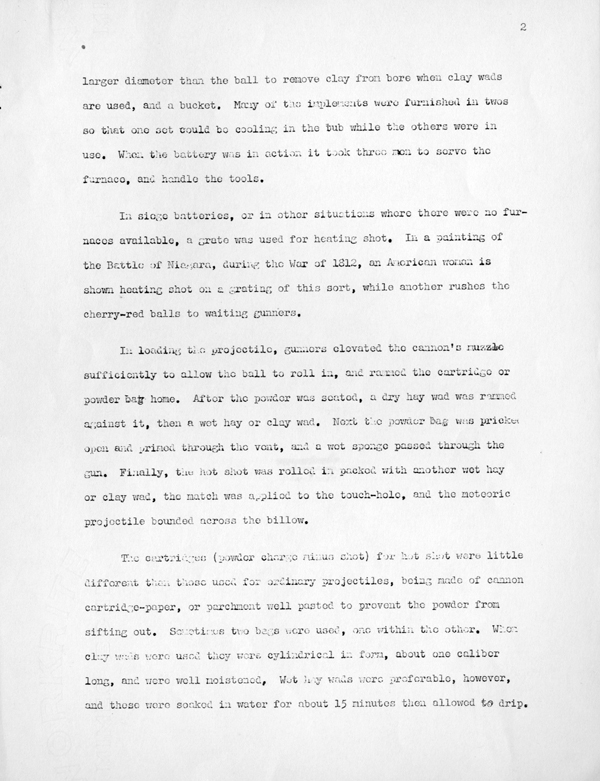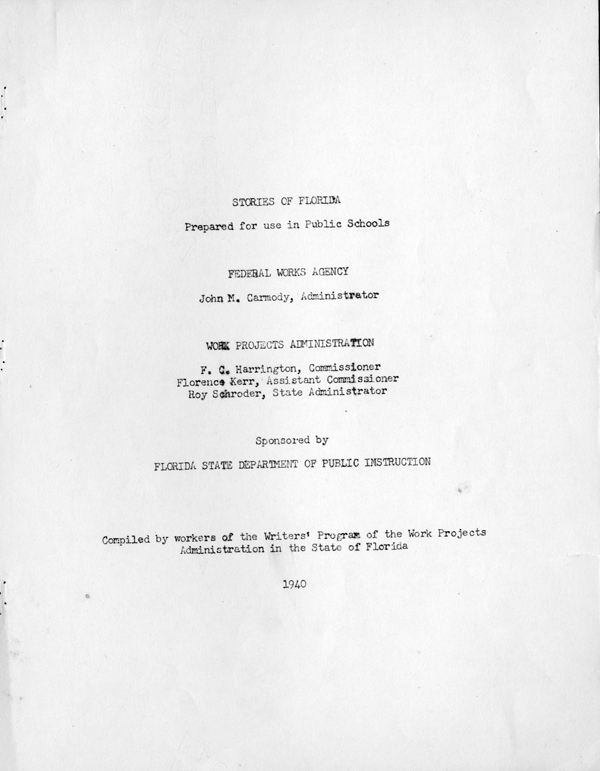Florida Memory is administered by the Florida Department of State, Division of Library and Information Services, Bureau of Archives and Records Management. The digitized records on Florida Memory come from the collections of the State Archives of Florida and the special collections of the State Library of Florida.

State Archives of Florida
- ArchivesFlorida.com
- State Archives Online Catalog
- ArchivesFlorida.com
- ArchivesFlorida.com
State Library of Florida
Related Sites

Description of previous item
Description of next item

Title
Published Date
[page 2]
larger diameter than the ball to remove clay from bore when clay wads are used,
and a bucket. Many of the implements were furnished in twos so that one set
could be cooling in the tub while the others were in use. When the battery was in
action it took three men to serve the furnace, and handle the tools.
In siege batteries, or in other situations where there were no furnaces
available, a grate was used for heating shot. In a painting of the Battle of
Niagara, during the War of 1812, an American woman is shown heating shot on a
grating of this sort, while another rushes the cherry-red balls to waiting gunners.
In loading the projectile, gunners elevated the cannon's muzzle sufficiently
to allow the ball to roll in, and rammed the cartridge or powder bag home. After
the powder was seated, a dry hay wad was rammed against it, then a wet hay or
clay wad. Next the powder bag was pricked open and primed through the vent,
and a wet sponge passed through the gun. Finally, the hot shot was rolled in
packed with another wet hay or clay wad, the match was applied to the touch-
hole, and the meteoric projectile bounded across the billow.
The cartridges (powder charge minus shot) for hot shot were little
different than those used for ordinary projectiles, being made of cannon cartridge-
paper, or parchment well pasted to prevent the powder from sifting out.
Sometimes two bags were used, one within the other. When clay wads were used
they were cylindrical in form, about one caliber long, and were well moistened.
Wet hay wads were preferable, however, and these were soaked in water for
about 15 minutes then allowed to drip.
Title
Subject
Description
Source
Date
Contributor
Format
Language
Type
Identifier
Published Date
Image URL
Thumbnail
Transcript Path
Image Path
Image Path - Large
Chicago Manual of Style
Hot Shot Oven at Fort Marion. 1940. State Archives of Florida, Florida Memory. <https://www.floridamemory.com/items/show/181525>, accessed 26 December 2025.
MLA
Hot Shot Oven at Fort Marion. 1940. State Archives of Florida, Florida Memory. Accessed 26 Dec. 2025.<https://www.floridamemory.com/items/show/181525>
AP Style Photo Citation

 Listen: The Bluegrass & Old-Time Program
Listen: The Bluegrass & Old-Time Program



